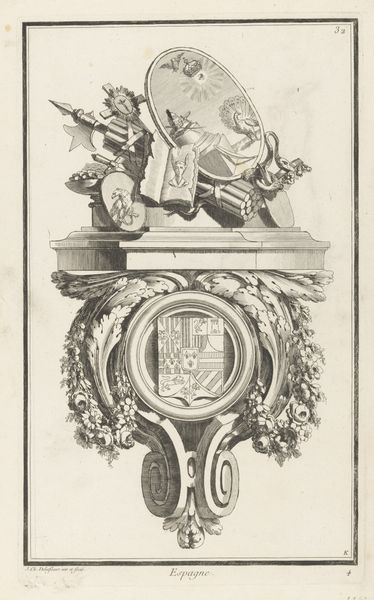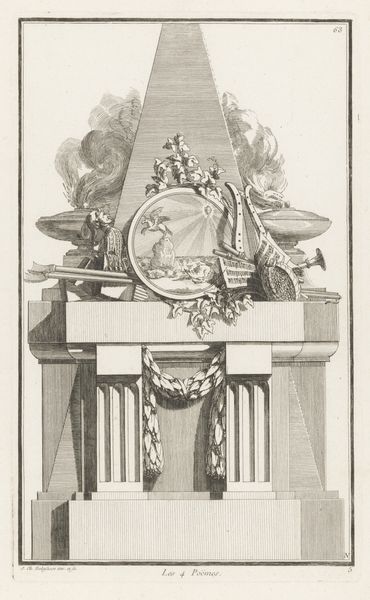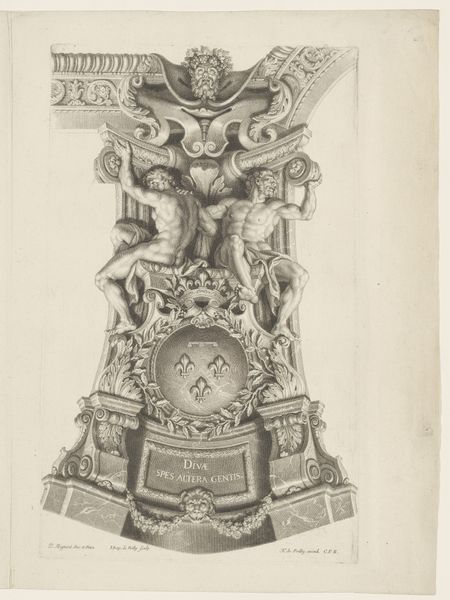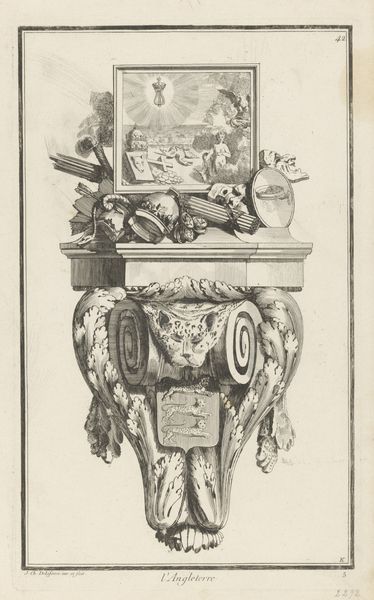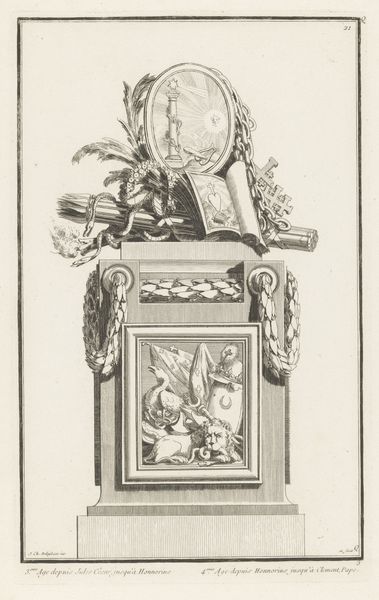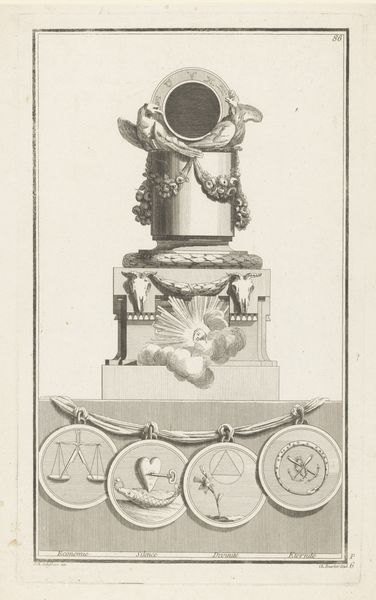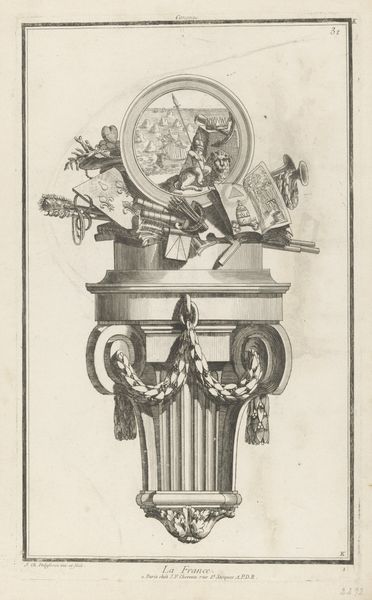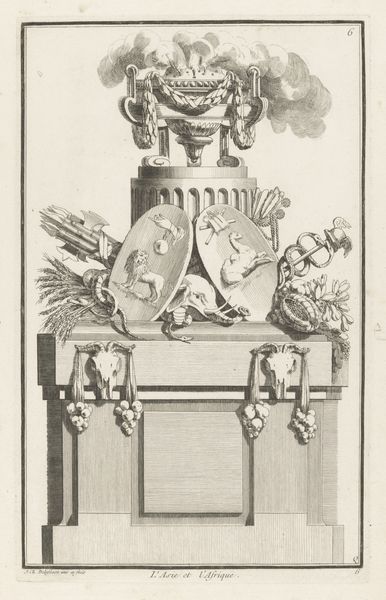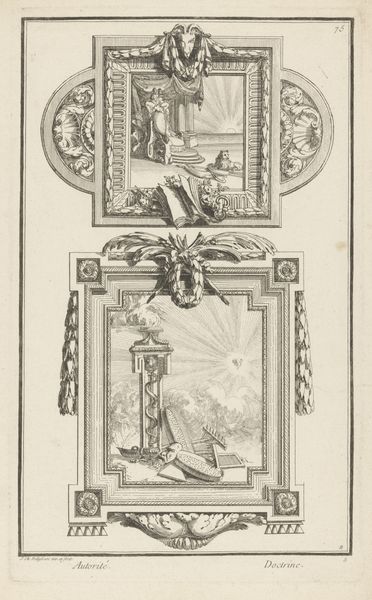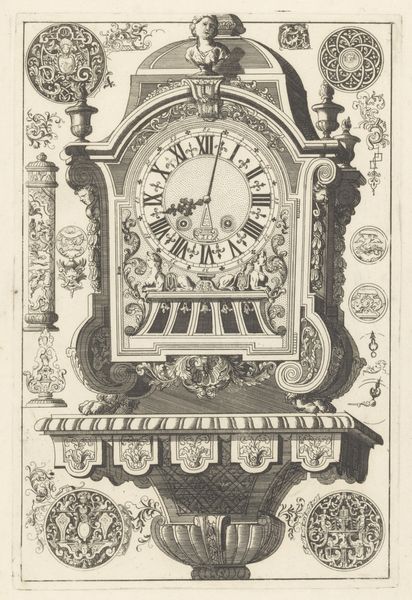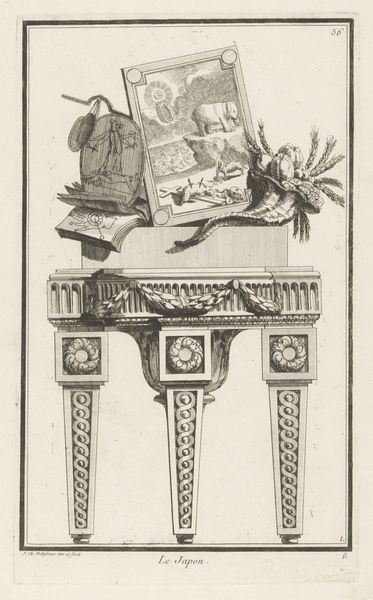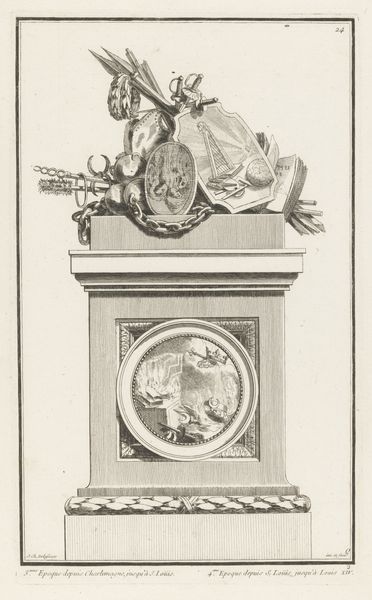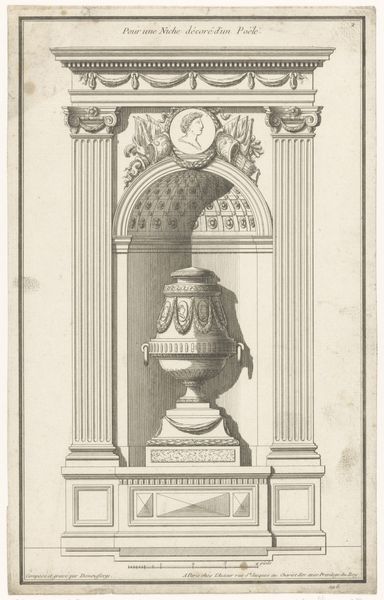
Dimensions: height 376 mm, width 230 mm
Copyright: Rijks Museum: Open Domain
Curator: This intricate print by Jean Charles Delafosse, created between 1768 and 1771, is titled "Jezus Christus, Constantijn en Karel de Grote". It resides here at the Rijksmuseum. Editor: It feels intensely symbolic. Like a monument rendered on paper, burdened by ornamentation and allegory, the sheer weight of its message is palpable. Curator: Delafosse worked in the midst of a significant shift in thinking about the role of imagery in public life. How might this work contribute or respond to debates about representation and power during the late 18th century? Editor: Absolutely. Its geometric formality almost suffocates under the layers of decorative detail, yet I am drawn to how it is suggestive of a narrative. The three figures presented, while divinely ordained, must each negotiate political realities that implicate their status as holy. Curator: Delafosse positions this print at a fascinating intersection between Baroque splendor and Enlightenment ideals. Considering Delafosse was a designer, does this engraving work more like propaganda for sacred, patriarchal leaders? How did religious images legitimize power, and who was included or excluded? Editor: Precisely! Consider its placement; an engraving is inherently reproducible, lending itself to widespread dissemination. We have an immediate ability to engage this print en masse, whereas the realities of monumental structures deny this level of collective experience. There is immense power here. Curator: Let us not disregard its role in interior spaces of the time. Prints like this provided an immediate vocabulary for conversations surrounding empire and morality. But is there something cynical about claiming that it merely reasserts old, problematic regimes through novel methods? Editor: Perhaps... or that is precisely what makes it so radical! By embracing mass distribution, this design actively democratizes the discourse about sacred rulers. It turns spectators into participants whether or not they intended to be. Curator: That’s an interesting tension to note as we continue our journey here at the Rijksmuseum. It underscores how an artist of Delafosse’s era simultaneously critiqued and celebrated systems of power and imagery.
Comments
No comments
Be the first to comment and join the conversation on the ultimate creative platform.
